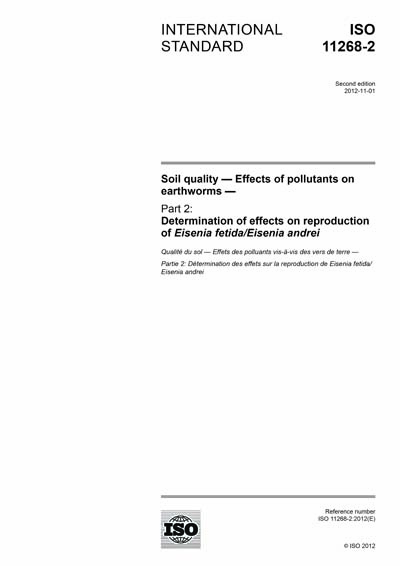Historical
ISO 11268-2:2012
Soil quality - Effects of pollutants on earthworms - Part 2: Determination of effects on reproduction of Eisenia fetida/Eisenia andrei
ISO 11268-2:2012 specifies one of the methods for evaluating the habitat function of soils and determining the effects of soil contaminants and chemicals on the reproduction of Eisenia fetida/Eisenia andrei by dermal and alimentary uptake. This chronic test is applicable to soils and soil materials of unknown quality, e.g. from contaminated sites, amended soils, soils after remediation, agricultural or other sites concerned, and waste materials.
Effects of substances are assessed using a standard soil, preferably a defined artificial soil substrate. For contaminated soils, the effects are determined in the test soil and in a control soil. According to the objective of the study, the control and dilution substrate (dilution series of contaminated soil) should be either an uncontaminated soil comparable to the soil sample to be tested (reference soil) or a standard soil (e.g. artificial soil).
Information is provided on how to use this method for testing chemicals under temperate as well as under tropical conditions.
The method is not applicable to volatile substances, i.e. substances for which H (Henry's constant) or the air/water partition coefficient is greater than 1, or for which the vapour pressure exceeds 0,013 3 Pa at 25 °C.
This method does not take into account the persistence of the substance during the test.
International Organization for Standardization [iso]

